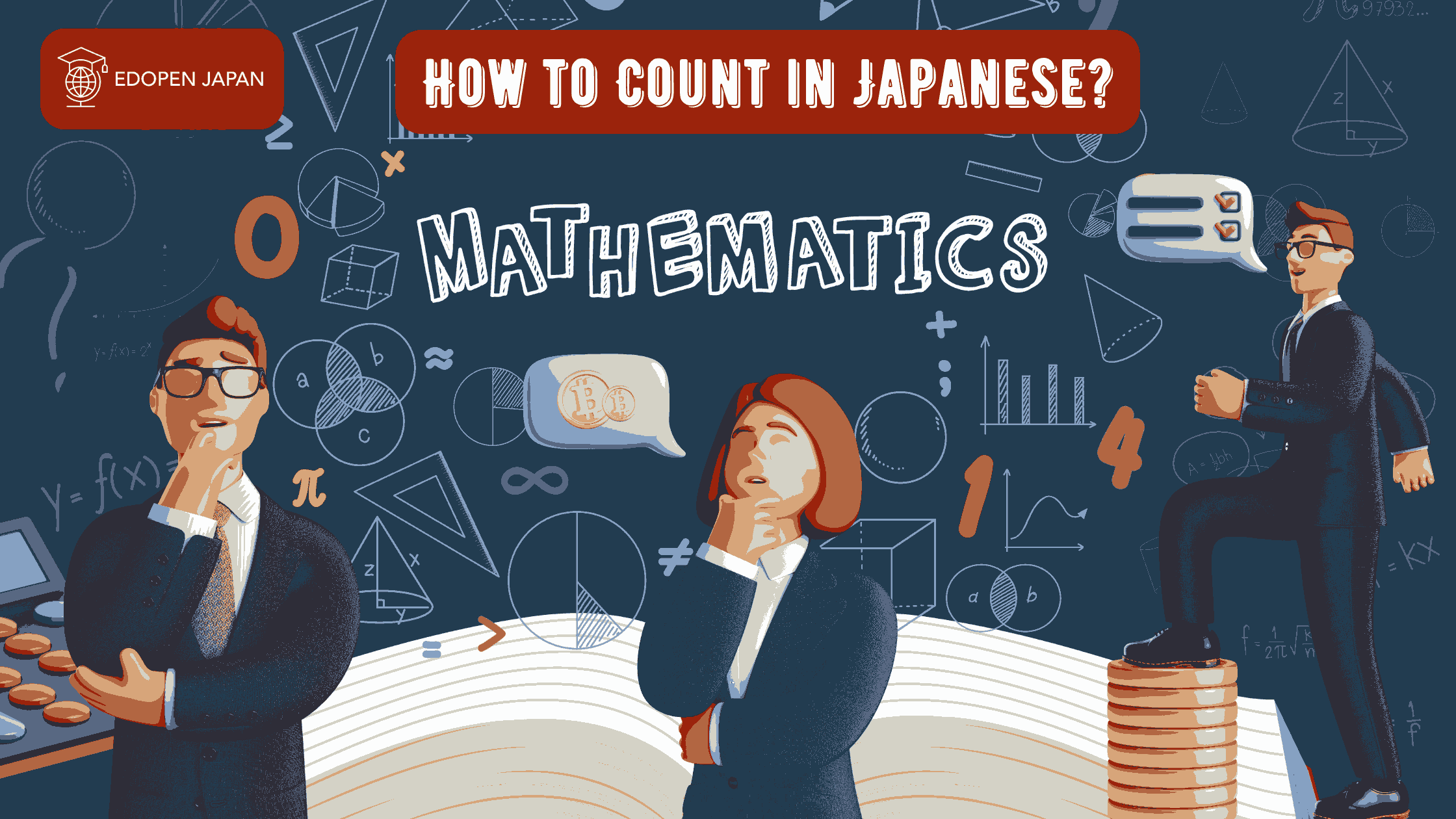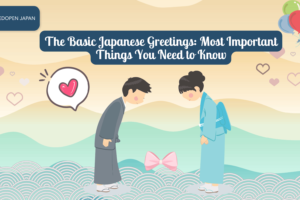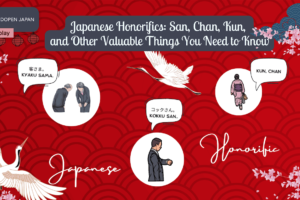Do you know how to count in Japanese? Learning to count is a crucial aspect of mastering basic Japanese.
It’s essential to understand how to handle numbers in Japanese as it serves a significant role in your daily life. Moreover, the counting system in Japanese differs significantly from that of English, which can initially seem daunting.
However, once you grasp the fundamentals, counting in Japanese becomes an enjoyable and effortless task. If you are proficient in counting and handling numbers in Japanese, you can easily calculate expenses related to shopping, transportation, and other essential needs in Japan.
With this in mind, our article aims to assist you in mastering the skills of counting and using numbers in Japanese. Join us now and immerse yourself in learning how to count in Japanese together!
In addition, if you are currently studying other significant Japanese number phrases, please refer to our comprehensive discussion below.
Read also:
Japanese Weekdays – Everything You Need to Know
How to Play Janken (じゃんけん) in Japanese?
Colors in Japanese | All You Need to Know
Contents
A Brief Overview about Japanese Numbers
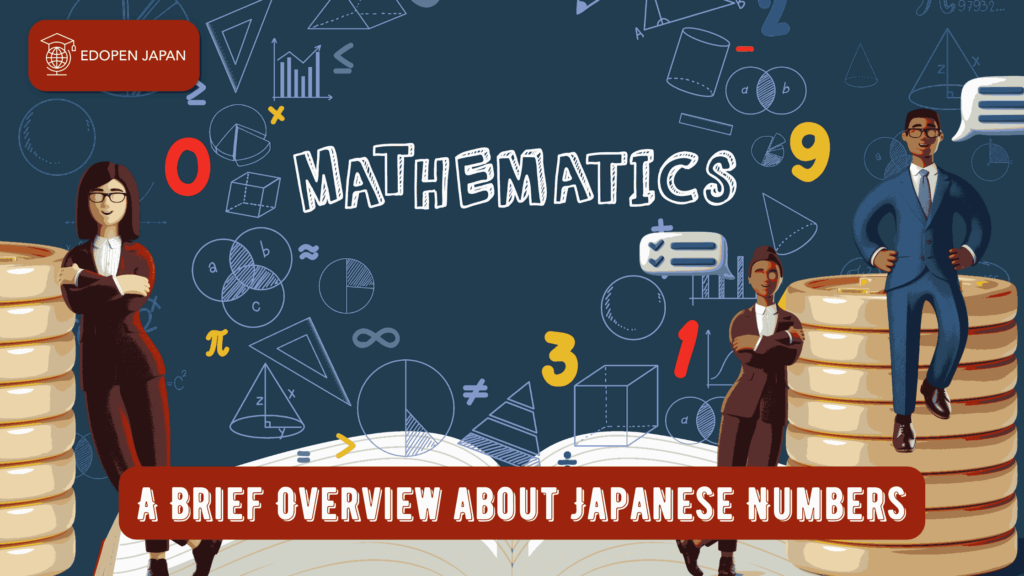
Before learning how to count in Japanese, it’s crucial to understand that Japanese people don’t always use their native numbers system. Instead, they employ Arabic numerals for writing like much of the world does. However, this shouldn’t discourage you from learning the Japanese number system, as people still make use of the Japanese kanji numerals as well.
The Japanese numerical system incorporates two distinct pronunciations: “Chinese-Japanese readings” or “On-yomi,” derived from Chinese numerals, and “native Japanese readings” or “Kun-yomi,” derived from Japanese words.
Since the native Japanese reading is only used for up to 10, the “Chinese Japanese reading” is the most commonly used. However, using the “Chinese-Japanese reading” (ichi, ni, san or “one, two, three” as spoken in English) requires understanding counters. We’ll discuss counters further shortly. Counters indicate the type of objects being counted and can include long objects, animals, small objects, machines, etc.
How to Count 1 to 10 in Japanese?
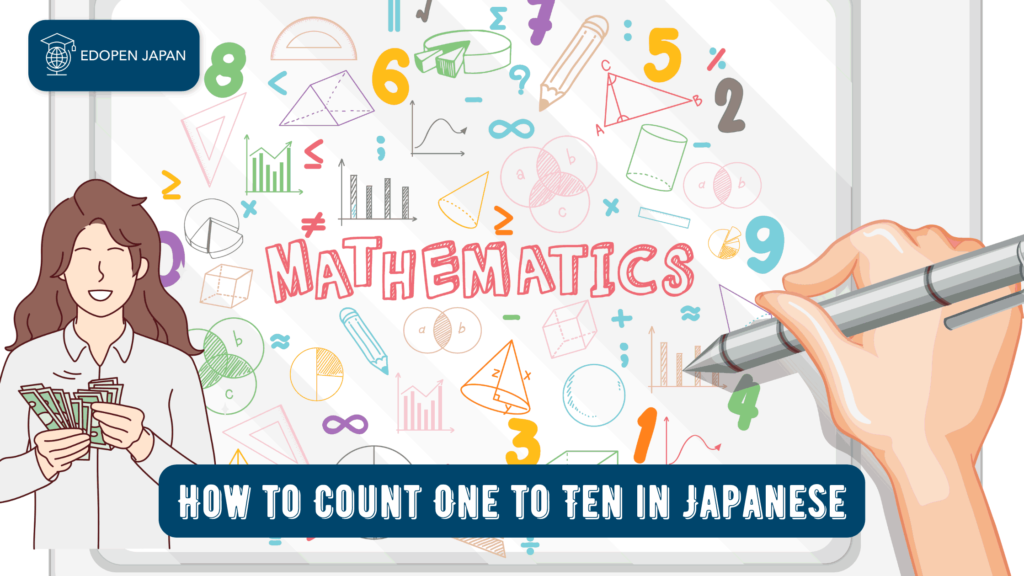
Start by learning the numbers 1 through 10 to gain a solid foundation for all other numbers. The most commonly used Japanese numbers are the “Sino-Japanese numbers”, but you’ll frequently encounter the numbers 1 to 10. Understanding their patterns enables you to form any number you desire. The Japanese number system comprises “Sino-Japanese numbers” and “Native Japanese numbers”. The most commonly used Japanese numbers are the “Sino-Japanese numbers”, but you’ll frequently encounter the numbers 1 to 10.
| Number | Sino-Japanese Numbers | Kanji | Native Japanese Numbers | Kanji |
|---|---|---|---|---|
| 1 | いち (ichi) | 一 | ひとつ (Hitotsu) | 一つ |
| 2 | に (ni) | 二 | ふたつ (futatsu) | 二つ |
| 3 | さん (san) | 三 | みっつ (mittsu) | 三つ |
| 4 | し、よん (shi, yon) | 四 | よっつ (yottsu) | 四 つ |
| 5 | ご (go) | 五 | いつつ (itsutsu) | 五 つ |
| 6 | ろく (roku) | 六 | むっつ (muttsu) | 六つ |
| 7 | しち、なな (shichi, nana) | 七 | ななつ (nanatsu) | 七つ |
| 8 | はち (hachi) | 八 | やっつ (yattsu) | 八つ |
| 9 | く、きゅう (ku, kyuu) | 九 | ここのつ (kokonotsu) | 九つ |
| 10 | じゅう (juu) /とう (tou) | 十 | とう(tou) | 十 |
| 0 | れい、ゼロ (rei, zero) | 零 | れい、ゼロ (rei, zero) |
The Native Japanese Numbers Counter
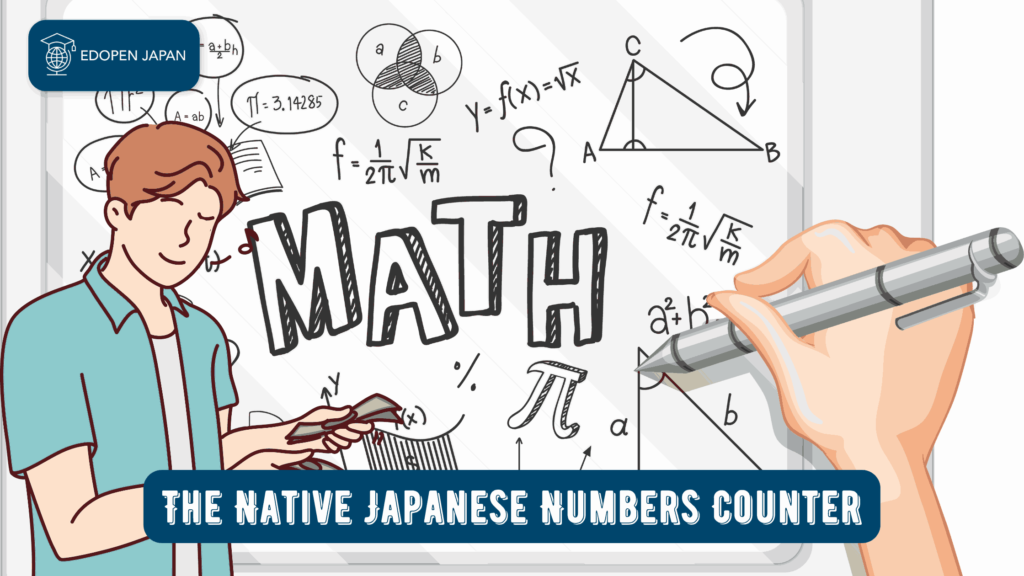
Let’s examine the Native Japanese series initially. The system covers only up to the number 10, rendering it more manageable. This numeral sequence serves as a universal counter, suitable for counting everything but money, time, and people. If you are uncertain about the appropriate counter, employ these numbers. The trick to recalling these numbers is that they all end in “Tsu” except for 10, which ends in “Tou”.
You can determine the counting system employed in Japanese by checking if the kanji is followed by a “tsu” [つ] (with the exception of 10). Counters specify the type of object being counted. In Japanese, the counters take various forms for a wide range of items, such as long objects and machines.
As a result, counting objects is one of the most difficult aspects of learning Japanese. Nonetheless, there are some tricks to facilitate your understanding.
The Further Guide about Japanese Numbers Counter
If you are unsure about the appropriate counter for an item, you can use the “Hitotsu, Futatsu” [一つ、二つ] system to count up to ten. Memorizing the native Japanese numbers will save you from a lot of confusion.
Additionally, be aware that specific numbers are conjugated differently based on the counter. Keep an eye out for numbers 1, 3, 6, and 8, as they tend to change. Please note that 1 changes about half the time, while 3, 6, and 8 change most of the time.
| Numbers | Explanation |
|---|---|
| 1. Three (三) | Changes the first letter of any counter from the “H” column of the kana chart to “B” or “P”. For example, 三分 (Sanpun) which means, three minutes. |
| 2. Six (六) | Changes the “H” kana to “PP” For example, 六匹 (Roppiki) which means, six animals. |
| 3. Hachi (八) | Changes “H” kana to “PP” counters the same as 6, usually. This is not quite a rule, but common enough to help you when you are getting started. Example: 八匹 (Happiki) meaning, eight animals. |
1. Counters for People in Japanese
When counting people in Japanese, the counter “Nin” [人] is used for three or more individuals. For a single person, “Hitori” [ひとり] is used, and for two individuals, “Futari” [ふたり] is used. Any number greater than two requires the “Sino-Japanese” number system followed by “Nin” [にん], such as “Sannin” (“three people”).
When counting people in Japanese, use the counter “Hitori” [ひとり] for one person, “Futari” [ふたり] for two people, and “Nin” [にん] for three or more people.
2. Counters for Long Objects
For slender objects such as pens, chopsticks, and bottles, the appropriate counter is “Hon” [本].
Example:
4本のペン
(Yon hon no pen)
Means, four pens
Although “Hon (本)” means “book” in Japanese, it is not the counter for books. That is “Satsu (冊),” which is the counter for bound objects such as manga. “Hon (本)” is the counter for things such as roads, rivers, and train tracks.
3. Counters for Small Objects
Used to count small objects, add “Ko (個)” to the number. It is also utilized for counting round objects.
Example:
リンゴ二個 (Ringo niko)
Means, two apples
4. Counters for Animals
When counting small animals, you use “Hiki” [匹] like dogs and cats. For larger animals, like horses or elephants, you use “Tou” [頭].
When counting small animals such as dogs and cats, use “Hiki (匹)”. For larger animals like horses or elephants, use “Tou (頭)”.
Example 1:
三匹の犬
(Sanbiki no inu)
Means, three dogs – also note the change from h to b in hiki
Example 2:
三頭の馬
(Santou no uma)
Means, three horses
5. Counters for Mechanical Objects
Even cars, washers, dryers, and video game consoles for playing Japanese games have their own counter. Bicycles also belong to this category, and they are referred to as “Dai (台)”.
Example:
二台の車
(Nidai no kuruma)
Means, two cars
6. Counters for thin, flat objects
To count thin, flat objects such as paper sheets, plates, or articles of clothing in Japanese, the “Mai (まい)” counter must be used.
Example:
二枚のかみ
(Nimai no kami)
Means, two papers
7. Counters for the units of time
To ensure clarity when discussing time in Japanese, it is important to use counters. Use “byou (秒) to express seconds, “fun or pun (分) for minutes, and “ji (時)” for hours.
8. Other Common Ways to Count
Other counters frequently encountered are “Kai (回)” and “Kai or Gai (階)”. “Kai (回)” expresses the frequency of an occurrence, such as the number of times per week you work out. “Kai or Gai (階) counts the number of levels in a building.
How to Count 1 to 100 in Japanese?

Once you master counting to 10, counting to 100 simply involves compounding and adding repeatedly. Here are a few examples to aid in comprehending the method for counting to 100 in Japanese:
| Numbers | Details |
|---|---|
| 11 is 十一 (Juuichi) | = 10 (Juu) + 1 (Ichi) |
| 12 is 十二 (Juuni) | = 10 (Juu) + 2 (Ni) |
| 20 is 二十 (Nijuu) | = 2 (Ni) 10s (Juu) |
| 21 is 二十一 (Nijuuichi) | = 2 (Ni) 10s (Juu) + 1 (Ichi) |
| 70 is 七十 (Nanajuu) | = 7 (Nana) 10s (Juu) |
| 76 is 七十六 (Nanajuuroku) | = 7 (Nana) 10s (Juu) + 6 (Roku) |
Then, 100 comes with a new word: 百 (Hyaku). Japanese numbers to 10,000 and beyond.
Now that you understood the magic rule of always adding and adding and adding to get new numbers, let’s look at the bigger leagues of Japanese numbers. How do you continue after 100? Find the way below!
| Number | Kanji | Hiragana | Romaji |
|---|---|---|---|
| 101 | 百一 | ひゃくいち | Hyaku ichi |
| 145 | 百四十五 | ひゃくよんじゅうご | Hyaku yon-ju go |
| 199 | 百九十九 | ひゃくきゅうじゅうきゅう | Hyaku kyu-ju kyu |
| 200 | 二百 | にひゃく | Nihyaku |
| 201 | 二百一 | にひゃくいち | Nihyaku ichi |
| 300 | 三百 | さんびゃく | Sanbyaku |
| 400 | 四百 | よんひゃく | Yonhyaku |
| 1,000 | 千 | せん | Sen |
| 10,000 | 一万 | まん | Ichiman |
As you can see, the principle we learned for counting the first 100 Japanese numbers is still applicable. To count beyond 100, you simply keep adding the numbers. When you reach 1,000, hyaku becomes sen, and so forth. Now, let’s examine a more intricate example to confirm your comprehension of the principle.
Let’s take the number 1289 as an example below!
千二百八十九 in kanji
せんにひゃくはちじゅうきゅう in Hiragana.
1000 (Sen) + 2 (Ni) 100s (Hyaku) + 8 (Hachi) 10s (Ju) + 9 (Kyuu) – Sen nihyaku hachijuu kyuu in romaji.
The Additional Tips for Further Understanding about Japanese Numbers
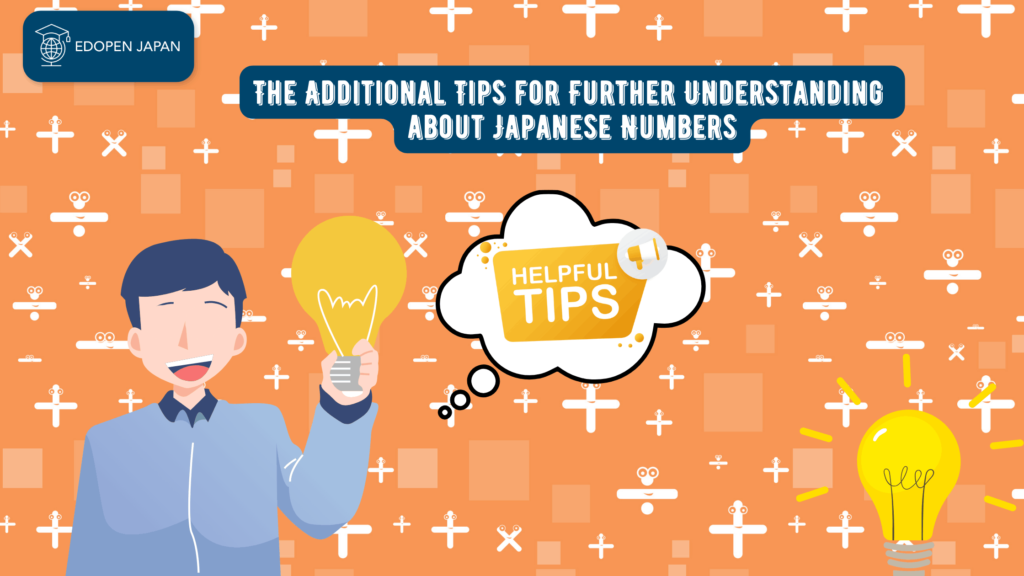
Certain numbers in Japan are considered either lucky or unlucky. It is crucial to be aware of these numbers as giving omiyage – お土産 (souvenirs or keepsakes) with the wrong number can accidentally convey a message of wishing someone a painful and slow death.
1. The Unlucky Numbers in Japanese
Now let’s delve into the Japanese numbering system. You may have noticed that numbers 4, 7, and 9 have two different readings. Interestingly, in Japanese culture, the numbers 4 and 9 are deemed unlucky because their pronunciation – “Shi (し)” and “Ku (く)” respectively – sounds the same as the words for “death (死, shi)” and “suffering, torment, or torture (苦, ku)”. In contrast, the number 13 is considered unlucky in Western culture.
Therefore, the Japanese try to avoid these unlucky words to the greatest extent possible. Certain structures, like hospitals, omit the fourth or ninth floors, although I’ve never actually encountered one. Maternity wards might not have room 043 as it resembles “shisan (死産 – stillbirth)”.
2. The Lucky Numbers in Japanese
In Japan, the number seven holds significant cultural and religious importance. The tradition of lucky number seven is not an imported concept but an integral part of the country’s culture. Considered a symbol of good fortune, it is deeply rooted in the country’s religious traditions dating back to Buddhism.
Japanese Buddhists observe the seventh day after a baby’s birth as a celebration and the seventh day after a person’s death as a mourning day, believing that the soul passes away on this day.
In Japanese folklore, there are the “Shichifukuin (七福神 – the seven gods of happiness)”. Additionally, “Tanabata (七夕 – an evening of the seventh)” is a significant summer holiday observed every July 7 (7/7). The number seven frequently surfaces in Pachinko arcades and scratch cards as well.
Although not as widely recognized, the number eight carries significant luck in Japanese culture due to its unique shape -八, known as “suehirogari (末広がり)”. The downward widening of the symbol implies growth and prosperity, making it highly sought-after. The Japanese people greatly value the importance of lucky and unlucky numbers, with four and nine being particularly ill-fated. Therefore, it’s advised to steer clear of giving gifts in sets of four or nine, and instead opt for threes or fives.
Summary
To recap, let us review the above information with the following key points. Kindly take notes and share your thoughts in the comment section below.
- Please note that certain counters require different conjugations for numbers 1, 3, 6, and 8. Japanese counting also varies depending on the object being counted, so it’s important to be mindful when utilizing it.
- The Japanese numbering system utilizes two types of pronunciations: “Chinese-Japanese readings” (On-yomi or “On-reading”), which rely on Chinese numerals, and “native Japanese readings” (Kun-yomi or “Kun-reading”), which utilize native Japanese words.
- The Japanese counting system is quite intricate. However, if you are unaware of the counter for an item, you can use the “Hitotsu, Futatsu [一つ、二つ]” system to count items up until ten.
- In Japanese culture, the numbers 4 and 9 are considered unlucky, so it’s important to be aware of this in daily life. On the other hand, the numbers 7 and 8 hold significant cultural meaning and are viewed as lucky in Japanese traditions.

